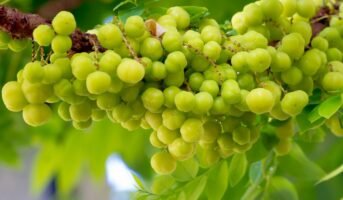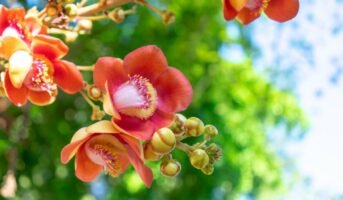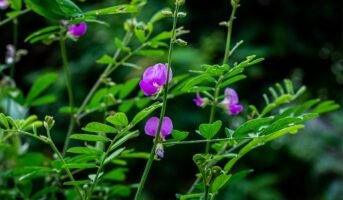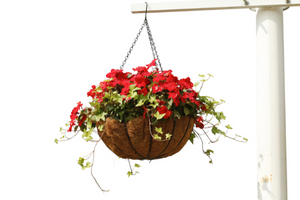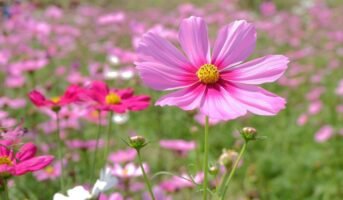What is the meaning of Hibiscus Tiliaceus?
Hibiscus Tiliaceus is a species of flowering tree belonging to the mallow family, Malvaceae. It has a pantropical distribution along coastlines and is found in tropical Africa, Asia, Australia, New Zealand and Florida. This ornamental plant can be a great addition to your vibrant garden.
Hibiscus Tiliaceus common name
The common names of Hibiscus Tiliaceus include the sea hibiscus, coast cottonwood, wild cotton tree, coast hibiscus, lagoon hibiscus, tree hibiscus. Previously predominantly growing in moist areas and coasts, Hibiscus Tiliaceus now is grown as an ornamental plant in tropical and subtropical regions worldwide. They appear yellow in the morning and turn to orange and red in the evening. Hibiscus Tiliaceus is a complete package as its flowers, stems, wood, roots, and leaves can be used for various purposes along with their beauty adding value to your garden.
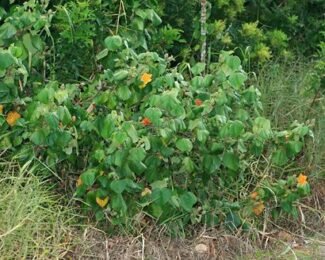
Source: Pinterest
About Hibiscus Tiliaceus
Hibiscus Tiliaceus is a beautiful flowering tree species belonging to the family mallow, native to the tropics of the Old-World. Some of the common names for Hibiscus Tiliaceus are sea hibiscus, beach hibiscus, native hibiscus, cottonwood hibiscus, and coastal hibiscus. “Tiliaceus” is an epithet that refers to its similarity to those leaves belonging to the Tilia species.
Hibiscus Tiliaceus can reach a height of 4 to 10m, and its trunk grows up to 15 cm in diameter. The flowers of this tree are a bright yellow with deep red color in its centre, visible on the opening. As the day progresses, the flowers turn into deep orange and finally into the red before they fall off. Like any hibiscus flower, they are funnel-shaped with five petals and a central column with the pistil and stamen. Hibiscus Rubra is a variant of Hibiscus Tiliaceus with red-tinted leaves. All flowers of Hibiscus Tiliaceus produce oval-shaped fruits, around 3cm in diameter, that split into 5 portions upon maturity. The fruits are initially green, turning yellow and then brown before releasing their seeds.
The branches of the Hibiscus Tiliaceus tree curve over time. The leaves of the tree are heart-shaped & deep red in color. The leaves of Hibiscus Tiliaceus are big, heart-shaped, & variegated in shades of pink, green, and cream. The patterns we can see in the leaves are specks, striped, splashed, and new growth is a dark maroon.
Is Hibiscus Tiliaceus native to Australia?
Hibiscus Tiliaceus is primarily found on the coasts of Northern and Eastern Australia, Maldives, Oceania, Southeast Asia, and South Asia. The tree can be found in areas that are 2600 feet above sea level and receive between 900-2500 mm annual rainfall.
Environment for growth of Hibiscus Tiliaceus
Hibiscus Tiliaceus is mainly seen on beaches, swamps, mangroves, and riverbanks. Being a coastal plant, Hibiscus Tiliaceus can tolerate salt & waterlog and grow in coral sand, limestone, and crushed basalt.
Being sturdy and low-maintenance, Hibiscus Tiliaceus can thrive in muddy soil. Apart from moist areas, they can also survive in dry areas, pastures, sandy soil, wastelands, and even by the roadside.
How to grow Hibiscus Tiliaceus in your garden?
Hibiscus Tiliaceus can be grown from seeds and show faster growth if sowed in September when the weather is warm. The seeds will germinate in around 15 days. The Hibiscus Tiliaceus plant can also be grown from cuttings. They can grow in regular garden soil, in semi-shaded or sunny areas.
While Hibiscus Tiliaceus can tolerate partial shade, they need proper sunlight for optimal growth. Otherwise, their growth will be slower and leaves will be smaller. Hibiscus Tiliaceus can thrive in a range of light to heavy textured soils. It can also survive in brackish swamps, limestone, and waterlogged soil. It can also sustain a salty ocean breeze.
You must water newly planted Hibiscus Tiliaceus daily to ensure a strong root system in the soil is developed. Once set up, these trees can survive with the moisture from seasonal rains, and they are also drought tolerant.
You can feed Hibiscus Tiliaceus a fertilizer with high potassium with an NPK (nitrogen, phosphorus, potassium) ratio of 17-5-24 or 10-5-25. You must use fertilizer every month from spring till late summer. To avoid any kind of root damage, use an adequate amount of fertilizer..
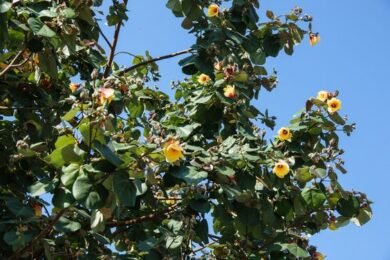
Source: Pinterest
Is Hibiscus Tiliaceus fast growing?
Hibiscus Tiliaceus is a very fast growing tree and grows to become a wide canopy. Considered as semi-mangroves, these are widely found near the sea as these are tolerant of sea water.
Steps to plant Hibiscus Tiliaceus in your home garden
- Use seeds to grow your hibiscus instead of cuttings.
- Choose the right time to plant. Hibiscus must be planted well only after the winter season.
- Choose the ideal location. While hibiscus love sunlight, too much direct sunlight can be harmful. Also, check the soil’s permeability and drainage capacity.
- Check the pH balance and make necessary amendments.
- Dig a deep hole for the roots to go completely in and leave some loose soil around.
- Plant each plant at least 2-3 feet away. Plant carefully without damaging the root.
- Refill the hole with soil only as high as the base of the stem.
- Give a good amount of water right after planting.
- Water regularly after that enough to keep your plant moist, not soaked.
- Keep the soil consistently moist and never dry.
- Wait one or two weeks before you fertilize the plants.
- Trim the plant regularly to promote new growth.
Do hibiscus grow well in pots?
The Hibiscus Tiliaceus plants can very fast. When mature, these plants grow up to 30 feet in height and equally are wide. However, you can plant them in big pot and place as a large potted plant.
How do you propagate hibiscus Tiliaceus?
Hibiscus Tiliaceus can easily be propagated using branch cuttings. Take a branch cutting and remove all the leaves. As this plant grows in width too, make lof of incisions on the stem at the lower part, before planting the stem in the soil. This way, the roots will also appear in the side, thus resulting in healthy plant. Pack the stem with soil and remove all the weeds so that plant gets good nutrition. Water when the plant dries. The cutting should start showing growth within 4 months.
What is Hibiscus Tiliaceus used for?
Although Hibiscus Tiliaceus are mostly grown as ornamental trees, these yield good quality wood and fiber from their bark. The tree is easy to grow and can be used for construction purposes. The wood from Hibiscus Tiliaceus can be used for making rafters, canoes, fishnet frames, fishing rods, furniture, hulls, tools, and posts.
The wood of Hibiscus Tiliaceus is also used in wood carvings, firewood, seacraft construction etc. The Hibiscus Tiliaceus plant fibre is used for making ropes and the bark of the plant is used for making corks and in repairing boats by sealing the cracked parts. Leaves of the Hibiscus Tiliaceus is used as trays for steamed rice.
The fiber from the bark is used for making ropes, mats, sandals, cords, harnesses for tree climbing, sewing tape, dancing skirts, bandages, and even fine fabric that is made by beating thin bark strips with a mallet. Since the branches and stems are long and flexible, these are used for making fish kraals and fence posts. Dried branches of the tree are used as fuel.
Hibiscus Tiliaceus also has certain medicinal uses. Parts of the tree are used in the treatment of cold, cough, bronchitis, sore throat, sores, boils, wounds, cuts, skin diseases, swelling, stomach pain, tuberculosis, eye infections, muscle pain, fractures, etc.
The tree has also been used widely as bonsai in many Asian countries.
FAQs
How long do Hibiscus Tiliaceus plants live?
Hibiscus Tiliaceus plants can live up to 10 years if taken good care.
What is the best place to plant Hibiscus Tiliaceus?
The best place to plant Hibiscus Tiliaceus is under full sunlight.
Is the Hibiscus Tiliaceus plant poisonous?
None of the parts of the Hibiscus Tiliaceus is poisonous, so it is safe to have the plant in your home garden.
Can you consume raw Hibiscus Tiliaceus flowers?
Yes. Consumption of the Hibiscus Tiliaceus flowers can significantly reduce total cholesterol levels in the individual.
Which is the best soil to grow Hibiscus Tiliaceus?
The best soil to grow Hibiscus Tiliaceus is alkaline to acidic soil.
Got any questions or point of view on our article? We would love to hear from you. Write to our Editor-in-Chief Jhumur Ghosh at [email protected]
Housing News Desk is the news desk of leading online real estate portal, Housing.com. Housing News Desk focuses on a variety of topics such as real estate laws, taxes, current news, property trends, home loans, rentals, décor, green homes, home improvement, etc. The main objective of the news desk, is to cover the real estate sector from the perspective of providing information that is useful to the end-user.
Facebook: https://www.facebook.com/housing.com/
Twitter: https://twitter.com/Housing
Email: [email protected]

